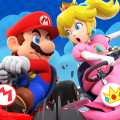I remember the day I first heard about Bad Parenting 1: Mr. Red Face. I was scrolling through my favorite gaming forum when I stumbled upon intense discussions and excited posts about a game that was as controversial as it was intriguing. Something about the raw portrayal of parenting gone awry piqued my interest. Upon installing the game, I was im...
Bad Parenting
I remember the day I first heard about Bad Parenting 1: Mr. Red Face. I was scrolling through my favorite gaming forum when I stumbled upon intense discussions and excited posts about a game that was as controversial as it was intriguing. Something about the raw portrayal of parenting gone awry piqued my interest. Upon installing the game, I was immediately drawn into an experience that blended satirical storytelling with quirky gameplay mechanics. My initial hours were filled with a mix of bewilderment, amusement, and genuine concern over the decisions made by my in-game character, who embodied the infamous Mr. Red Face.
Unforgettable Gameplay Moments
As I began playing, the gameplay itself captivated me in ways I wasn’t expecting. The mechanics are unconventional, inviting players to navigate a world where parenting responsibilities are intentionally mishandled. The controls, although responsive, required a level of humor and creativity to master. I found myself laughing out loud at the absurd tasks I had to complete. Each level presented unpredictable challenges that forced me to think outside the box while grappling with the responsibilities of a notorious parental figure. It was as if the game deliberately pushed the boundaries of what one might consider a typical simulation.
Navigating Unpredictable Mechanics
One of the more complex aspects of Mr. Red Face is its embrace of randomness in gameplay. I encountered puzzles and hurdles that demanded rapid adaptation. At times, the mechanics seemed counterintuitive, leaving me uncertain of the best way to progress. However, the thrill of not knowing what the next task would be served as a constant adrenaline booster. I remember an instance where a seemingly simple decision led to an avalanche of unexpected consequences, forcing me to restart a segment of the game. This unpredictability kept me engaged, as every mistake provided a new lesson in the art of unconventional parenting.
The Intriguing Paradox of Parenting Humor
Bad Parenting 1: Mr. Red Face delivers a brand of humor that is dark and layered. Throughout my journey, I encountered moments that were both hilarious and piercingly reflective of the struggles faced by those in parenthood. The game does not shy away from portraying the chaos of life, and it makes me question the expectations we set for ourselves as caregivers. I found solace in the fact that every misstep in the game felt like a twisted mirror to everyday frustrations. The humor emerged from the clashes between responsible behavior and the game’s inherent chaos, creating a narrative that was both relatable and absurd.
Engaging Storyline that Defies Convention
The narrative of Mr. Red Face struck me from the beginning. Unlike many simulation games that rely on linear progression, this title delivers a story that is fragmented yet profoundly engaging. I became deeply invested in the character’s journey as a representation of flawed idealism. The storyline is peppered with ironic commentary and surprising plot twists that come from the very core of bad decision making. I often found myself pausing the game just to reflect on how the narrative satirizes the unrealistic expectations placed on individuals in charge of a family. The unconventional narrative structure made for an immersive experience that was hard to step away from.
Visual Style and Artful Expression
The aesthetics of Bad Parenting 1: Mr. Red Face are deliberately eclectic. The game employs a vibrant mix of cartoon-inspired graphics with moments of stark realism. I was struck by the expressive character designs that managed to convey a wide range of emotions, from despair and anger to outright hilarity. The color palette is bold and unapologetic, capturing the calamity that unfolds on screen. While the graphic choices are sometimes jarring, each frame is composed with a distinct artistic vision that communicates the themes of chaos and irony. From meticulously drawn environments to quirky animations, I felt every visual element was designed to evoke a sense of heightened reality.
Soundtrack that Sparks Emotion
The audio landscape of this game is an unexpected delight. I found the soundtrack to be cleverly composed, blending jazzy tunes with quirky sound effects that accentuated every bizarre in-game event. The music adapts dynamically to the gameplay, shifting from lighthearted melodies during calm moments to frenetic rhythms amid chaos. I particularly appreciated how the sound design elevated the emotional impact of key scenes. Whether it was the clamor of a mismanaged household or the subtle undertones of regret and longing, the auditory experience was as immersive as the visual one. Each track felt carefully crafted to pull the player deeper into the narrative world, while also keeping pace with the erratic nature of the gameplay.
Dynamics of Character Interaction
Perhaps the most compelling aspect of my journey was the depth of character interaction. Mr. Red Face is more than just an avatar of poor parenting; he is a complex individual whose interactions with other characters reveal layers of vulnerability and humor. I experienced a range of reactions from characters influenced by my decisions, from startled indignation to reluctant amusement. The game allowed for multi-directional interactions where every dialogue choice or action had consequences that rippled through the storyline. I was particularly moved by moments when non-playable characters expressed regret or compassion, which added a human touch to the otherwise exaggerated world of the game.
Complexity in Parental Relationships
The theme of parenting is at the heart of this game, and it is addressed with an uncompromising honesty. I found myself grappling with the representation of familial relationships that are both chaotic and deeply human. The game does not offer moral absolutes; instead, it presents a world where each interaction adds nuance to the concept of what it means to be a caregiver. I encountered a series of scenarios where the repercussions of my actions left me questioning my own perceptions of responsibility and love. From misguided advice to humorous misunderstandings, every situation reinforced that parenting is a complex dance of intention, consequence, and occasional farce.
Customization and Replayability
One of the features that kept me coming back was the high degree of customization available in Mr. Red Face. The game encourages creative expression by allowing me to tweak various aspects of the in-game world, from the appearance of the house to the behavior of the supporting characters. I experimented with different strategies and comedic approaches, each time unlocking new challenges and narrative pathways. The open-ended nature of the game offered a rich playground for exploration and experimentation. Each replay presented fresh perspectives and hidden nuances that I had not noticed before, inviting me to consider alternative paths and decisions to see how the intricate web of consequences unfolded anew.
Responsive Control System and Interaction Flow
During my hours immersed in the game, I greatly appreciated the control system’s responsiveness. Despite the game’s chaotic nature, the controls provided a sense of familiarity and consistency that allowed for smoother navigation through the unpredictable scenarios. I found that the ability to quickly adapt and change strategies was crucial to progressing in the game. Whether I was managing escalating domestic crises or trying to resolve unexpected disputes, the interface remained intuitive. This balance between simplicity in control and complexity in outcomes created a dynamic tension that was both rewarding and challenging. The quick response time also meant I could experiment with different approaches without fear of long delays, keeping the game’s pace brisk and engaging.
Experimentation and Risk Management
Every decision I made in Bad Parenting 1: Mr. Red Face carried a weight of consequence that was both humorous and frightening. I was continuously aware that the game was not just a series of arbitrary challenges but a carefully curated mix of opportunities and pitfalls. Enjoying the game meant embracing the risk, pushing forward even when the outcome of an action was uncertain. At times, venturing into unknown territories within the game’s framework felt like an experiment in risk management, where unexpected variables could alter the course of gameplay drastically. This deliberate design choice encouraged me to try unconventional methods and unexpected paths, further deepening my engagement with the game’s multifaceted design.
Personal Connection and Immersive Narrative Techniques
What truly set my experience apart was the immersive narrative technique embedded within the game’s structure. The writing and dialogue are crafted in a way that allowed me to form a personal connection with the character I was portraying, despite his many flaws. I found that the game often mirrored real-life frustrations and humorous side effects of being overwhelmed by responsibility. The narrative did not shy away from exposing vulnerabilities and depicting the imperfections inherent in human relationships. I could sense that every interaction, every poorly thought-out decision, was layered with meaning beyond mere satire. The character development was subtle yet persistent, inviting me to reflect on my beliefs about family dynamics and the consequences of neglecting personal responsibilities.
Interactive World and Environmental Storytelling
Stepping into the world of Mr. Red Face was like entering an interactive canvas where every element told its own story. The settings within the game are filled with visual cues and details that reward careful observation. From scattered toys in a disordered living room to subtle hints of an underlying narrative in the background, the environment itself became an active part of the storytelling. I often found myself pausing to explore a corner or inspect a seemingly insignificant detail, only to discover that it contributed to a richer, more nuanced backstory. This approach to environmental storytelling not only enhanced the overall immersion but also forced me to engage with the game on multiple levels, appreciating the craftsmanship behind every pixel and sound byte.
Adaptive Challenge and Learning Curve
Throughout my journey, I encountered a learning curve that was as steep as it was fascinating. The game adapts to the player’s actions in a way that gradually forces new approaches and problem-solving strategies. I noticed that every miscalculation or poorly timed decision served as feedback, nudging me toward adopting a more agile mindset. This adaptive challenge tested both my reflexes and my capacity for strategic thought. The game rewarded patience and experimentation, making every small success a triumph in the midst of chaos. I relished the feeling of progressive mastery as I began to predict potential pitfalls and plan more effective countermeasures. In a game that thrives on unpredictability, my growing competence provided a satisfying sense of evolution and personal achievement.
- Unique satirical humor that offers refreshing and quirky narrative twists
- Engaging and unpredictable gameplay that keeps the experience fresh and dynamic
- Highly customizable in-game settings that encourage creative problem-solving
- Expressive visuals and an eclectic art style that enhance the overall mood
- Adaptive challenge system that rewards persistent experimentation and growth
- Immersive audio landscape that smartly shifts to match the unfolding chaos
- The steep learning curve can overwhelm players who prefer conventional mechanics
- Unconventional gameplay elements may confuse or frustrate new users
- Some thematic elements and narrative choices might not appeal to all audiences




